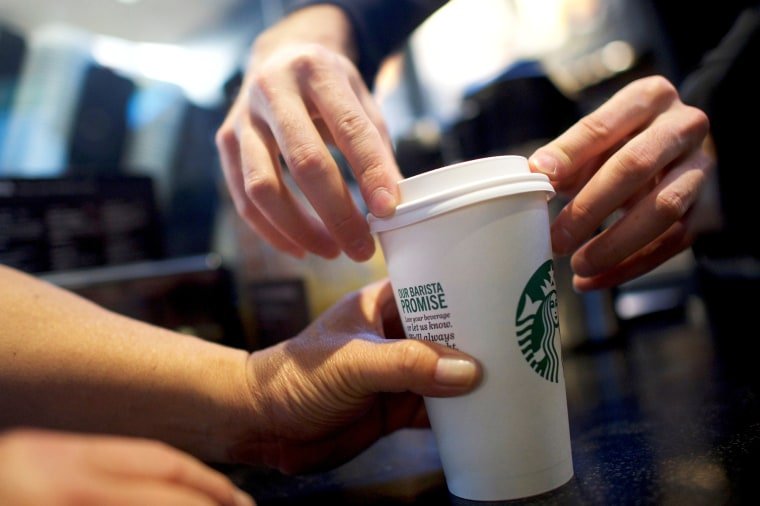Compared to eating at home, going out at quick-service restaurants has become more expensive.
In Short
- Quick-service restaurants face declining same-store sales due to rising costs and changing consumer preferences.
- Despite challenges, some chains like wingstop and chipotle are seeing positive sales trends.
- Industry leaders are focusing on value menus and competitive pricing to attract budget-conscious customers.
TFD – Dive into the evolving landscape of quick-service restaurants, exploring declining sales, shifting consumer behaviors, and innovative competitive strategies.

Finally, the long-awaited consumer retreat is here.
Starbucks’ shares fell 17% on Wednesday after the company revealed an unexpected decline in same-store sales for the most recent quarter. KFC and Pizza Hut both reported declining same-store sales. Even the venerable McDonald’s claimed to have embraced a “street-fighting mentality” in order to compete for value-conscious diners.
Economists have been forecasting for months that rising costs and interest rates would cause consumers to reduce their spending. However, despite multiple quarters of warnings to investors that low-income consumers were weakening and other diners were trading down from pricier options, it has taken some time for fast-food restaurants to really notice a decline in sales.
Numerous restaurant chains provided further justifications for their unsatisfactory quarterly performance. Starbucks claimed that poor weather reduced same-store sales. Yum Brands, the parent firm of Pizza Hut, KFC, and Taco Bell, attributed its brands’ subpar performance on January’s snowstorms and difficult comparisons to a robust first quarter of the previous year.
However, all justifications fall short of explaining the poor quarterly performance. Instead, it appears that as diners who are still in the market for a burger or cold brew become more selective with their money, competition for a smaller pool of customers has intensified.
Compared to eating at home, going out at quick-service restaurants has become more expensive. Prices for limited-service restaurants rose 5% in March compared with the year-ago period, while prices for groceries have been increasing more slowly, according to the Bureau of Labor Statistics.
“Clearly everybody’s fighting for fewer consumers or consumers that are certainly visiting less frequently, and we’ve got to make sure we’ve got that street-fighting mentality to win, irregardless of the context around us,” McDonald’s CFO Ian Borden said on the company’s conference call on Tuesday.
Customers will continue to order their favorite items, even if they cost more now than they did a year ago, as evidenced by outliers. Wall Street’s preferred restaurant chain, Wingstop, announced that first-quarter same-store sales in the United States surged by 21.6%. In its first quarter, Chipotle Mexican Grill witnessed a 5.4% increase in traffic. Additionally, Popeyes by Restaurant Brands International reported a 5.7% increase in same-store sales.
However, a lot of businesses in the restaurant industry and elsewhere have cautioned that customer pressures could not go away. Chris Kempczinski, CEO of McDonald’s, informed analysts that the global spending prudence is in place.
“It’s important to note that industry traffic in the United States, Australia, Canada, Germany, Japan, and the United Kingdom was flat to declining in [the first quarter],” he stated.
Value was mentioned as a contributing factor by two chains that had trouble in the first quarter. According to Starbucks CEO Laxman Narasimhan, some consumers weren’t purchasing the chain’s coffee because they were looking for greater value and diversity.
During the company’s Tuesday call, Narasimhan stated, “In this environment, many customers have been more exacting about where and how they choose to spend their money, particularly with stimulus savings mostly spent.”
Yum CEO David Gibbs stated that KFC’s U.S. sales were negatively impacted by competitors’ cheap prices on chicken menu items. However, he stated that Taco Bell, which generates three-quarters of Yum’s domestic operating profit, should gain from the move to value.
Industry data tells us that value is more significant than other factors, that others struggle with value, and that Taco Bell is a leader in value. Some low-income customers are leaving the market, as you can see. That’s not what we see at Taco Bell,” he declared on Wednesday.
Although executives offered upbeat timeframes and strategies to bring sales back on track, it is uncertain how long it will take for fast-food businesses to see a recovery in sales. Yum, for instance, predicted that its first quarter would be the worst of the year.
McDonald’s intends to develop a value menu that will be available nationwide and appeal to customers who are budget conscious. However, the company that owns the fast food chain may encounter resistance from its franchisees, who have been vocal in recent years. Deals increase sales, but they also put pressure on operators’ earnings, especially in regions where operating costs are high.
Nonetheless, McDonald’s franchisees might be inspired by falling behind the competition. For the second quarter running, Burger King has outperformed McDonald’s in terms of same-store sales growth in the United States. For the past two years, the Restaurant Brands business has been substantially investing in advertising as part of a turnaround strategy.
Starbucks is a deal-better as well. The coffee chain is getting ready to launch an app update that will let regular customers order, pay, and receive discounts in addition to loyalty members. Even though sales was still slow in April, Narasimhan also highlighted the success of its recently launched line of lavender drinks, which debuted in March.
Conclusion
As quick-service restaurants navigate declining sales, the emphasis on value menus and competitive pricing becomes crucial for sustained success. Adapting to changing consumer behaviors remains a key strategy moving forward.
Connect with us for the Latest, Current, and Breaking News news updates and videos from thefoxdaily.com. The most recent news in the United States, around the world , in business, opinion, technology, politics, and sports, follow Thefoxdaily on X, Facebook, and Instagram .
